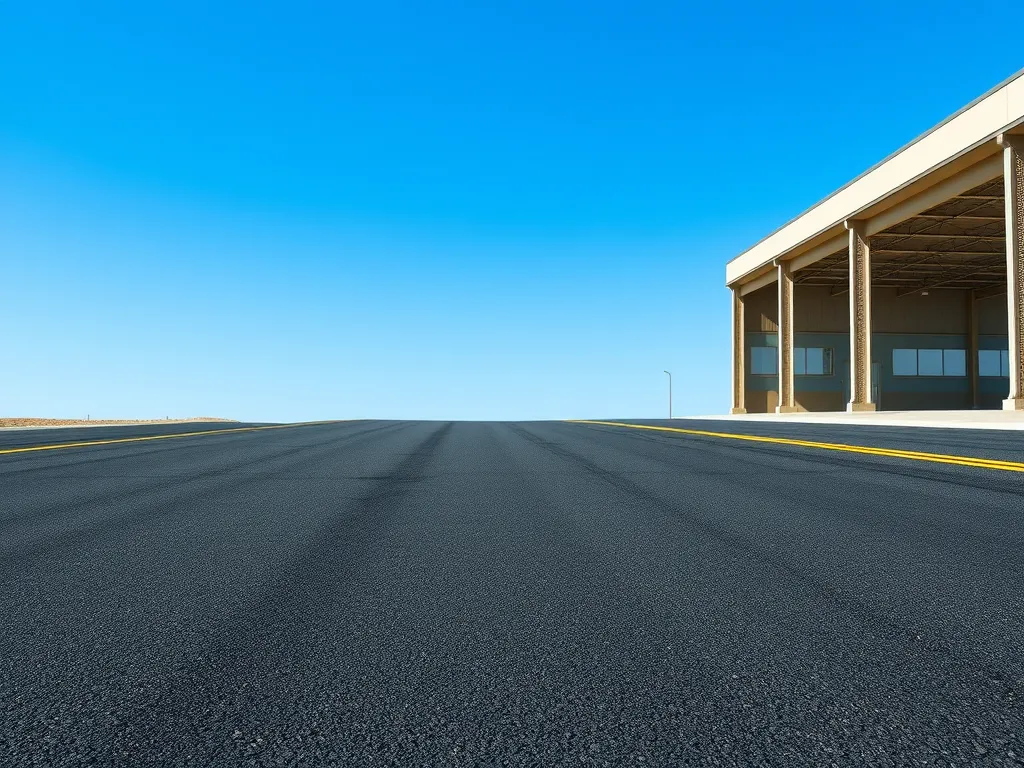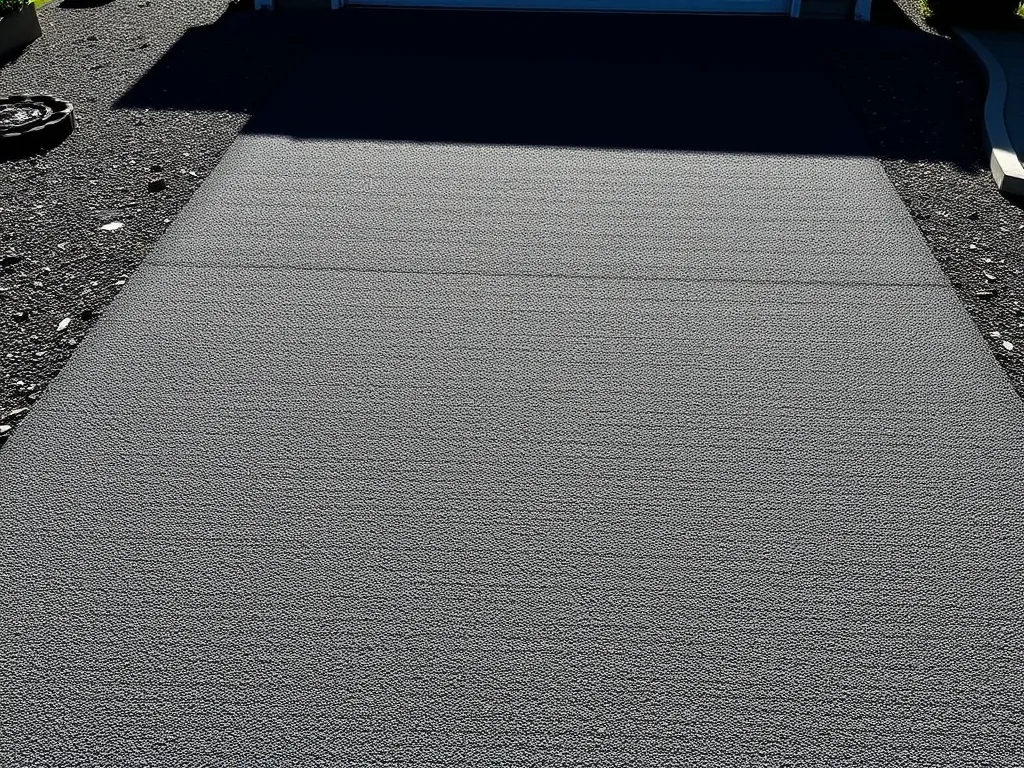7 Costly Asphalt Driveway Mistakes Every Homeowner Should Avoid
Published on: October 21, 2025 | Last Updated: April 14, 2025
Written By: George Voss
Common mistakes in asphalt driveway installation include improper base preparation, incorrect mix temperatures, and rushed compaction. These errors cause cracks, potholes, and drainage issues within months. Knowing what to watch for helps DIYers avoid rookie errors and lets homeowners spot poor contractor work before it’s too late.
This article breaks down seven installation blunders that ruin driveways. We cover everything from soil testing to sealing schedules. Learn how to choose the right base materials, maintain proper slope grades, and protect your investment from weather damage.
Contents
- Critical Errors During Asphalt Driveway Installation
- Signs Of Poorly Installed Asphalt Driveways
- Primary Causes Of Asphalt Driveway Damage
- Preventing Common Asphalt Installation Errors
- Environmental Considerations for Asphalt Driveways
- Frequently Asked Questions (FAQs)
- Closing Thoughts
- Additional Resources for You:
Critical Errors During Asphalt Driveway Installation
Even minor oversights during installation can slash asphalt lifespan by 40-60%. Let’s break down the technical missteps that create long-term headaches.
Improper Base Preparation
A stable base prevents 80% of driveway failures. Yet many contractors skip vital steps to cut costs or time.
Neglecting Proper Soil Compaction
Uncompacted subsoil settles unevenly, causing cracks within months. Proper grading requires achieving 95% Proctor density – a standard often ignored. Use nuclear density gauges to verify compaction, not just visual checks.
Using Substandard Base Materials
Crushed stone (3/4” minus) is the gold standard. Some crews substitute cheaper materials like recycled concrete or clay-rich soils. These trap moisture, reducing load-bearing capacity by 30-50%.
Incorrect Asphalt Mix Temperature
Asphalt cement viscosity depends on precise heat control. Deviations create weak spots.
Applying Hot Asphalt in Cold Weather
Mix temps below 280°F prevent proper bonding. Thermal contraction from cold ambient air (under 50°F) causes micro-cracks. Always check plant delivery temps – they drop 2-5°F per minute during transport.
Mixing Cold and Hot Asphalt Layers
Layering 300°F fresh mix over cooled binder (under 175°F) creates delamination. Use infrared thermometers to verify layer compatibility – temp differentials exceeding 25°F guarantee failure.
Poor Compaction Practices
Under-compacted asphalt loses 20% density, doubling water infiltration risks.
Inadequate Rolling or Tamping
Steel drum rollers must make 8-10 passes per layer. Hand tampers can’t achieve the required 92-96% Marshall density for driveways.
Rushing the Compaction Process
Cooling asphalt loses 5°F every 2 minutes during compaction. Stopping rolling at 185°F (not 175°F) leaves air voids above 7% – the threshold for premature raveling.
Inadequate Drainage Planning
Water causes 90% of asphalt deterioration. Proper slope and drainage add 8-12 years to pavement life.
Ignoring Slope Requirements
Driveways need 1-2% slope (1/4” per foot) away from structures. Flat sections pool water, eroding base materials in freeze-thaw cycles.
Failing to Install Edge Drains
French drains or trench drains along edges prevent subsurface saturation. Without them, 40% more water penetrates joints, softening subgrade soils.
Improper Curing &Amp; Sealing
Fresh asphalt needs 6-12 months to fully oxidize before sealing. Premature treatments trap volatiles, creating bubbles and poor adhesion.
Sealing Too Early After Installation
Apply sealcoats before complete curing (under 6 months), and you’ll seal in oils needed for flexibility. Result? Brittle surfaces crack under first winter freeze.
Exposing Fresh Asphalt to Heavy Loads
Parking cars within 72 hours indents soft asphalt. Wait 30 days for full curing – especially crucial for driveways with RVs (10,000+ lbs).
These installation errors often surface as visible defects within 12-18 months. Let’s examine how to spot warning signs before repairs become costly.
Signs Of Poorly Installed Asphalt Driveways
Installation flaws show up fast. Watch for these warning signs that point back to asphalt driveway install mistakes.
Surface Irregularities
Visible texture issues often trace back to mix quality or compaction. Two patterns signal trouble.
Alligator Cracking
Interlocking cracks forming a scaly, web-like pattern indicate weak bases. Causes: 4″+ base layers missing, compaction below 92% density, or thin asphalt layers (under 2.5″). Fixing costs $3-$7 per sq.ft. – avoid by using 6-8″ crushed stone bases.
Premature Raveling
Aggregate loosening within 6-12 months points to bad binder adhesion. Cold mix application (below 275°F) or insufficient rolling force (under 2-ton rollers) triggers this. Requires sealcoating at $0.15-$0.25 per sq.ft. annually to mitigate.
Structural Weaknesses
Load-bearing failures stem from foundational shortcuts. Look for these red flags.
Sinking or Depressions
Dips deeper than 1/2″ signal unstable subgrades. Clay soils compacted at >15% moisture content shrink, causing sinkage. Proper grading with 95% Proctor density prevents this.
Potholes Within First Year
Holes wider than 3″ before 12 months pass? Likely from mixing hot/cold asphalt layers or skipping tack coats between lifts. Costs $50-$200 per pothole to patch.
Water Drainage Failures
Pooling or runoff issues stem from slope or edge errors. Two common outcomes:
Standing Water Pools
Puddles lasting >24 hours mean slopes under 2% grade. Fix requires milling + adding 1/4″ per foot pitch – adds $1.50-$3.00 per sq.ft. to projects.
Erosion Along Edges
Crumbling sides occur without 6-8″ gravel shoulders or edge drains. Install 4″ perforated PVC pipes ($4-$8/linear foot) to divert runoff.
Spotting these signs early helps fix small issues before full rebuilds. Up next: why asphalt fails and how to stop it.

Primary Causes Of Asphalt Driveway Damage
Three factors account for most asphalt driveway failures: excessive weight, water penetration, and environmental wear. These issues often stem from installation errors that surface months later. Let’s break down each threat.
Excessive Weight Loads
Asphalt withstands cars but crumbles under concentrated pressure. New driveways face higher risks due to uncured binders. Even minor weight errors accelerate structural decline.
Parking Heavy Vehicles on New Asphalt
Parking RVs, trucks, or construction equipment on fresh asphalt creates dents exceeding 150 PSI. The asphalt binder needs 30 days to fully harden. Premature loads leave depressions that trap water and weaken the base. Use plywood sheets under jacks or stands to distribute weight temporarily.
Water Infiltration Issues
Water causes 85% of asphalt damage when it seeps into cracks or edges. Unsealed joints and poor drainage let moisture erode the base layer. This leads to potholes, heaving, and alligator cracking within two freeze-thaw cycles.
Poorly Sealed Expansion Joints
Expansion joints absorb asphalt’s natural movement from temperature shifts. Gaps left unsealed with ASTM D6690-rated materials allow water to pool beneath the surface. Silicone-based sealants last 8-12 years versus 3-5 years for cheaper asphalt emulsions. Check joints annually for gaps wider than ½ inch.
Environmental Stressors
Asphalt loses flexibility in extreme temperatures. UV rays oxidize binders, while freeze-thaw cycles fracture the surface. Northern states see 30% faster deterioration due to thermal stress.
Freeze-Thaw Cycle Damage
Water expands 9% when frozen, pushing asphalt upward. Repeated thawing creates voids under the pavement. Use air-entrained asphalt (ASTM D3515) in cold climates – it contains tiny air pockets that absorb expansion. Without this mix, driveways lose 40% of their strength after 10 cycles.
Addressing these risks early prevents costly repairs. Next, we’ll explore proven strategies to avoid installation errors entirely.
Also See: Cooling Methods for Hot Asphalt: Best Practices
Preventing Common Asphalt Installation Errors
Avoiding common asphalt driveway installation mistakes starts with proactive planning. Focus on base stability, weather timing, and compaction precision to create surfaces lasting 20+ years.
Proper Base Preparation Techniques
Over 60% of asphalt failures stem from poor bases. Use geotechnical soil reports to identify clay content or drainage issues. Meet ASTM D1557 standards for 95% compaction density.
Soil Testing and Grading Best Practices
- Conduct proctor tests to measure soil density potential
- Install 6-8″ crushed aggregate base (CA6 or RCA)
- Slope subgrade 2% minimum for water runoff
Optimal Weather Conditions for Installation
Asphalt mix cools 2-5°F per minute during placement. Installers must track ambient and surface temps to prevent thermal segregation – a top cause of asphalt driveway install mistakes.
Ideal Temperature Ranges for Asphalt Layering
- Base layer: 275-300°F (PG 64-22 binder)
- Surface layer: 250-275°F (PG 58-28 binder)
- Minimum ambient temp: 50°F rising
Effective Compaction Methods
Steel-wheel rollers (10-12 tons) achieve 92% density on initial passes. Pneumatic rollers then seal surfaces. Poor rolling creates air voids over 8% – prime spots for freeze-thaw damage.
Layer-by-Layer Compaction Guidelines
- Compact base aggregate in 4″ lifts
- Roll asphalt binder course within 290-300°F window
- Final surface compaction within 15 minutes of placement
Long-term Maintenance Strategies
Sealcoating delays oxidation by 5-7 years when timed right. Let new asphalt cure 6 months before first application. Use coal-tar emulsions (35-45% solids) for maximum protection.
Sealing Schedule Recommendations
- Initial seal: 6-12 months post-installation
- Reapplication: Every 3 years (moderate climates)
- High-traffic areas: Annual crack sealing required
While proper installation prevents 80% of driveway issues, material choices also impact longevity. Next we’ll examine eco-friendly asphalt options that combat environmental wear.

Environmental Considerations for Asphalt Driveways
Ignoring environmental factors ranks among frequent asphalt driveway install mistakes. Sustainable practices prevent premature damage while meeting modern ecological standards.
Eco-friendly Material Choices
Opting for green materials combats common asphalt installation mistakes. Specifying recycled components reduces resource extraction and landfill waste.
Recycled Asphalt Product (RAP) Options
RAP mixes contain 20-35% reclaimed asphalt pavement. Contractors skipping RAP miss three key advantages:
- Reduces material costs by 18-22% versus virgin mixes
- Maintains 95% strength of new asphalt when properly processed
- Cuts CO2 emissions by 20% during production
Failure to request RAP blends often stems from outdated paving assumptions, not performance limits.
Runoff Management Solutions
Improper water handling causes 43% of early asphalt driveway failures. Modern systems redirect stormwater without compromising pavement integrity.
Permeable Asphalt Alternatives
Permeable asphalt features 16-20% void spaces for water infiltration. Unlike traditional pavement errors, this design:
- Filters 4,500 gallons/hour per 10×10 ft area
- Reduces local flooding risks during 2-inch rain events
- Recharges groundwater supplies naturally
Installers unfamiliar with open-graded mixes may create drainage issues through default material selection.
Smart material selection and water management prevent asphalt driveway laying mistakes. Next, we examine how professionals spot installation defects before they escalate.
Frequently Asked Questions (FAQs)
What Should You Avoid Doing on a New Asphalt Driveway?
Avoid parking heavy vehicles on the driveway in the first 30 days to prevent permanent indentations. Additionally, it’s essential not to apply sealant too early or allow any heavy loads, as the asphalt needs time to cure properly.
How Can You Identify a Poorly Done Asphalt Job?
Signs of a poorly executed asphalt job include visible surface irregularities, such as alligator cracking or premature raveling, structural weaknesses like sinking or depressions, and poor drainage management, resulting in standing water or erosion.
What Causes the Most Damage to Asphalt Driveways?
Excessive weight loads, water infiltration issues, and environmental stressors like freeze-thaw cycles are the primary causes of damage. These issues often relate back to poor installation practices or lack of proper maintenance.
What is the Estimated Cost Of a 20×20 Asphalt Driveway?
The cost of a 20×20 asphalt driveway typically ranges from $1,200 to $2,500, depending on factors like location, material quality, site conditions, and labor costs. It’s advisable to get multiple quotes from contractors for a more precise estimate.

Closing Thoughts
Installing an asphalt driveway can be a daunting task, especially with several common mistakes that can impact its longevity and performance. From improper base preparation to inadequate drainage planning, awareness is key to achieving a durable surface.
Attention to detail during installation is essential. This includes choosing the right asphalt mix temperature and ensuring proper compaction. Neglecting these steps can lead to serious problems like cracks and raveling.
Also, consider environmental factors. Using eco-friendly materials and managing runoff effectively can enhance the sustainability of your driveway.
For further insights and useful tools, check out Asphalt Calculator USA. Your investment in knowledge can help ensure a successful asphalt driveway installation.
Additional Resources for You:
- Roberts, F. L., Kandhal, P. S., Brown, E. R., Lee, D. Y., & Kennedy, T. W. (1996). Hot Mix Asphalt Materials, Mixture Design, and Construction (2nd ed.). National Asphalt Pavement Association (NAPA).
- Don’t let these common asphalt driveway installation mistakes …
- 8 Common Asphalt Paving Mistakes and How to Avoid Them
- 5 Common Mistakes to Avoid When Installing an Asphalt Driveway | Buck Bros
- Common Asphalt Paving Mistakes You Should Know About


